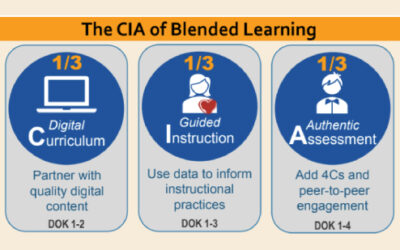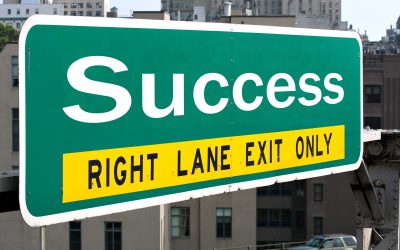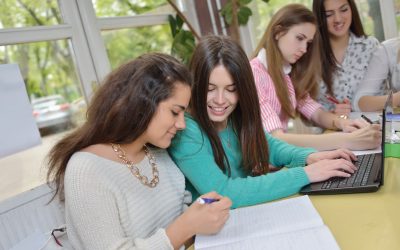Join us, as our staff shares their expertise in 500 words or less. A quick read with lots to consider and ponder when establishing, maintaining, and evaluating blended learning programs.
Find Your Rhythm
Dealing with the pandemic, the uncertainty on the political front, and the rising call for social justice has all of us in a bit of a craze. COVID-19 started as a crisis (back in March 2020), but if we continue to manage the educational setting as if it is a crisis, we will exhaust ourselves. We must recognize a need for finding our rhythm. Our mental health is at risk should we continue to act in haphazard manners – exhausting ourselves, our students, and families.
read moreFailing Forward: Adjust and Adapt Baby
COVID-19 has put us on equal footing. We are all new at this. Today’s world is all about “adjust and adapt.” We will stumble a lot. We will fall down often. Embrace the mindset of failing forward and celebrating the little successes along the way. Adjust and adapt baby!
read moreStart Anew and Build Back Better
I once believed that the term blended learning, would slowly vanish, as it would just become the classroom norm. This huge worldwide experiment of school closures and adopting remote learning has exposed the great truth. Blended learning is not the norm. Educators pride ourselves on being lifelong learners. The pandemic has given us the opportunity to learn. Learn new techniques. Learn new pedagogy. Learn to adapt. Then let us take this opportunity to “build back better” and set a new norm. Don’t go back to the way it was. Push forward, wiser and stronger. Re-define education by changing classroom practice.
read morePlanning with Balance in Mind During COVID-19
In these COVID-19 times, we are all learners. Teachers, students, and families are learning new skills, pedagogies, and technologies. While new learning and professional growth is exciting, it is also exhausting.
View supporting Webinar
Focus on the core business of schools: relationships and learning. Keep an open line of communication. As you plan lessons, remember to balance learning with Maslow’s Hierarchy of Needs.
Continued Learning in the Wake of COVID-19 Times
The coronavirus (COVID-19) has put us all in a world that we did not see coming. The rapid deployment of social distancing took many by surprise, and each state, school, and individual teacher will contend with their own unique challenges as they tackle this crisis.
View supporting Webinar
Yet, as educators, we must figure out how to continue the learning. In times like this, even our teachers will be learning – learning new skills and pedagogy.
3yr Roadmap to Growth
Let’s talk about the path to developing a successful digital learning program.
The roadmap to digital learning often starts with a purchase of technology devices. Transition to a blended learning environment begins to take place as teachers partner with digital content and change their instructional pedagogy by releasing control to students and tech. When teachers and students both start using data to inform and drive instruction is when we start to create a blended personalized learning environment where true success is achieved. Increased rigor, with higher Depths of Knowledge (DoK), can be obtained when digital learning is balanced with quality instruction and student ownership.
read moreDigital Learning Creates Opportunities to Thrive
Access to digital curriculum in a comprehensive school setting can be an excellent way to create opportunities for students to thrive.
Listen to the 40 minute Podcast
Digital curriculum is the first piece of the CIA of Blended Learning (digital Curriculum, guided Instruction, authentic Assessment), yet it’s important to ensure that educators understand the partnership between digital content and teacher-led guided instruction. Otherwise establishments create digital learning environments that isolate and remove high quality instructional practices, such as teacher and peer interaction, plus they tend to lower standards/expectations.
CIA Walkthrough – Measuring Pedagogical Shift
Blended learning, when teachers partner with digital content to create a personalized learning environment, may be difficult to measure – but not impossible. Measuring a pedagogical shift requires data collection from classroom observations using a walkthrough tool. Establishing a blended classroom walkthrough tool begins with identifying observable actions such as the implementation of the CIA of Blended Learning.
read moreDoes Blended Work? – The 4Ps of Evaluating Your Blended Program’s Effectiveness
When seeking a return on investment (ROI) for blended learning, one must first have a vision for what blended classrooms should look, act, and feel like. When attempting to answer, ““How do we know blended learning is working,” consider breaking the measures of evaluating blended learning effectiveness into four different data sources, which I like to call the 4Ps: Performance, Pedagogy, Perception, and Partnerships.
read moreHiring for Jobs to be Done
Understanding the “job” for which one is hiring for will benefit the client in selecting the right product and service in need and maximize its fullest potential. Using online content and tools has become a regular appearance in the nation’s K-12 classrooms. Many different deployment methods have been utilized – often lumped into a single category of ‘digital learning.’ However, in the landscape of the classroom, when technologies are brought into the fold, not all programs are created equal.
read moreCurriculum Mapping for Blended
When partnering with digital curriculum, think through the process of how to best utilize the digital content. One way of doing this is creating a curriculum map that outlines the standards and objectives. Then align the digital curriculum that will help you meet these goals. Start small. For example, look at one unit of study at a time, rather than the whole semester or school year. Partnerships are never easy, but they can make our lives better. Remember the true focus here is not the adult in the room – but the student learner. Their world is filled with technology advantages. Our classrooms must model this by providing learners with the best of both worlds: the teacher they love and the ability to drive their own learning with digital curriculum and authentic assessments.
read morePartnering with Digital Content
It’s that time of year again, when students are excited to meet their new teachers and staff are busy preparing classrooms. It’s important to kick the school year off on the right foot. One that can lead to excitement, innovation, and higher student gains. As the saying goes, “We can’t keep doing the same thing, and expect different results.” It’s a new school year. Time to reflect and start fresh. Set some goals. Look for a digital partner you can share instruction with in your classroom. Make a new year resolution to distribute the load and change your instructional approach to a blended personalized classroom. Partner with a quality digital curriculum.
read morePaving a Path to Personalized Learning
Personalized learning is a word that is thrown into every educational conversation, yet does it have a single meaning, or is the definition determined by the individual who hears or uses it. There is a four-part “working definition” that includes competency-based progression, flexible learning environments, personal learning paths, and learner profiles. Imagine doing all of this without technology. Blended learning, coupling the best of face-to-face instruction with the best of digital learning, capitalizing on both human and technology resources, is the road most travelled.
read moreOne-Third Relationships within the CIA of Blended Learning
An easy one-third balanced CIA blended framework with Technology (digital Curriculum), Teacher (guided Instriction), and Student (authentic Assessment). Understanding the one-third relationship of the three elements shifts teacher mindset for partnering with digital content and releasing learning to students in active engagement settings.
We challenge educators to rethink their role as a facilitator who is intentionally “off the stage” two-thirds of the time. We like to call this two-thirds time ‘teaching by walking around,’ which leads to stronger teacher-student relationships. This one-third balance isn’t just a framework—it’s a mindset shift that empowers students, leverages technology, and fosters deeper learning.
read moreFostering an Environment for Blended Personalized Learning
As teachers gain expertise through blended rotational models, they become better prepared to implement a more disruptive model of blended personalized learning. The implementation of such will occur on a continuum for each teacher, classroom, and school. All are at a different starting point and potentially a different ending point. It’s important to create precise messaging and scaffolded steps to guide teachers, classrooms, and schools along their journey.
read moreGrowing Up Digitally in High School
Allow students to grow up digitally. From the early freshman year to college ready senior year, digital learning can open doors for high school students. Use the CIA model of blended learning, where teachers have a full understanding and embrace a balanced approach to digital curriculum, guided instruction, and authentic assessment in blended classrooms that introduce students to taking ownership of their own learning, in a nurturing environment. Building on success, year after year, in a slow roll, students and staff become familiar with partnering with digital content. Begin in the early years and gradually release responsibility to students for their own learning.
read moreBook: Think Outside the Box
I’ve spent the last year accumulating and assembling program advise and deployment designs for secondary schools into a new book. I’ve gathered these words of wisdom, (nearly twenty years’ worth in the digital learning front) from working with hundreds of schools and thousands of classroom teachers in Nevada’s Clark County School District, the fifth largest in the nation. Below are a few excerpts from my new book titled: Think Outside the Box: The CIA of Blended Learning and 10+ Designs for Secondary Schools. Not only will schools of the future need to think outside the box, they must think differently about the relationships of curriculum, instruction, and assessment (CIA). In blended and personalized learning, that’s: digital Curriculum, guided Instruction, authentic Assessment.
read moreCreating a Five Year Plan
August is a wonderful time of the year. The new school year is upon us. The energy level is high. Excitement fills the air from parents, students, and teachers. How will you capitalize upon this? Who can you reach out to support your dreams and desires? Earlier this month, I had the pleasure to share Clark County’s path of success in a recent podcast.
Listen to the 30 minute Podcast #40Take inventory. Where are you today? Where do you want to be? How will you scale the great divide?
read more


















Recent Comments